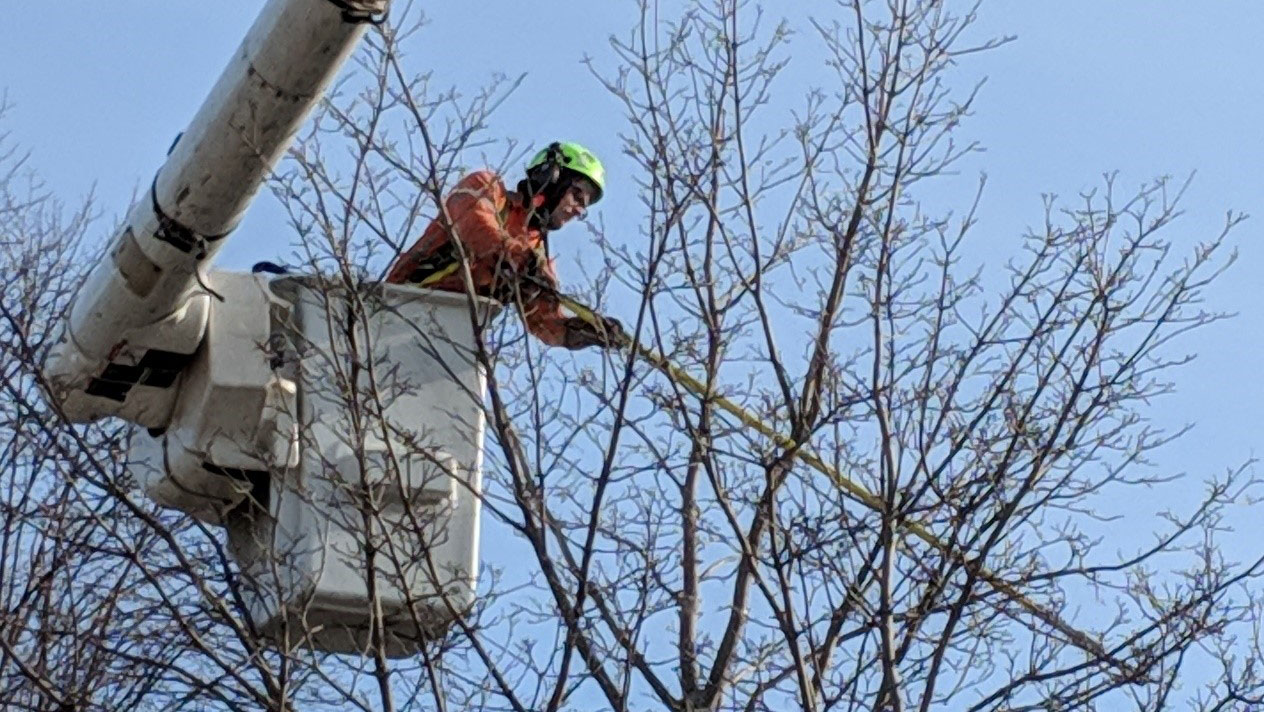
The City has approximately 10.2 million trees, which provide 18,000 hectares of canopy cover. Urban Forestry is responsible for protecting, maintaining, and enhancing the urban forest in the City. Urban Forestry currently assigns tree maintenance work to both City staff and contractors. The City pays on average $1.7 million per month to three contractors to provide daily tree maintenance services including pruning, watering and removing trees.
By The Numbers
- $20 million – annual contract costs for daily tree maintenance services
- 62% of the sampled contractor logs have discrepancies between the crews’ daily activity logs and their vehicle GPS reports
- $2.6 million – estimated potential loss in contractor crews’ productivity
- 2.8 hours – average time spent at tree service locations within an 8-hour shift for some contractor crews
- 41% of both City and contractor crews’ daily logs contained entries that should have been questioned
- 97% of storm cleanup requests, 90% of tree pruning requests, 88% of tree planting requests, and 62% of tree removal requests were completed within service standards
Background
We issued our first report on permit issuance and tree by-law enforcement functions in June 2018. This second report focuses on the tree planting and maintenance services.
Urban Forestry requires each contractor and City crew to complete a daily log detailing the maintenance work performed and all other work-related activities within their eight-hour shift. The daily logs serve as the proof of work performed, and the City pays the contractors according to work hours reported in their daily logs. Part of our audit included a comparison of the daily logs with the contractor crews’ vehicle GPS reports. We could not conduct the same comparative analysis for city crews because Urban Forestry’s vehicles do not have a GPS system.
What We Found
We compared a sample of 45 contractor crews’ daily logs with their vehicle GPS records and noted 28 of them contain one or both of the following issues:
- Crews’ vehicles did not stop near the tree service locations.
- Vehicles went to locations that were not related to the assigned tree service locations (e.g., coffee shops, plazas), and these locations were not noted in their daily logs. The total time spent at these locations far exceeded the allowable 60 minutes for lunch and breaks.
This could mean that part of the 8-hour work paid by the City was not spent on City work related activities. The estimated potential loss in productivity is approximately $2.6 million per year. Also, if an inaccurate maintenance record is created for a tree in Urban Forestry’s system, this could have adverse long-term effects because it may be at least another seven years before the tree receives the next scheduled maintenance.
As shown in the pie chart below, after deducting the average time spent on supporting activities, the on-site tree maintenance time for the 28 contractor crews’ daily logs averaged 4.5 hours, of which 1.7 reported work hours were not supported by the GPS reports, leaving only 2.8 hours for tree maintenance work for the City.
How The Recommendations Will Benefit The City
This report provides 10 recommendations to help Urban Forestry improve its contract management, customer service and operational efficiency for its tree planting and maintenance programs.